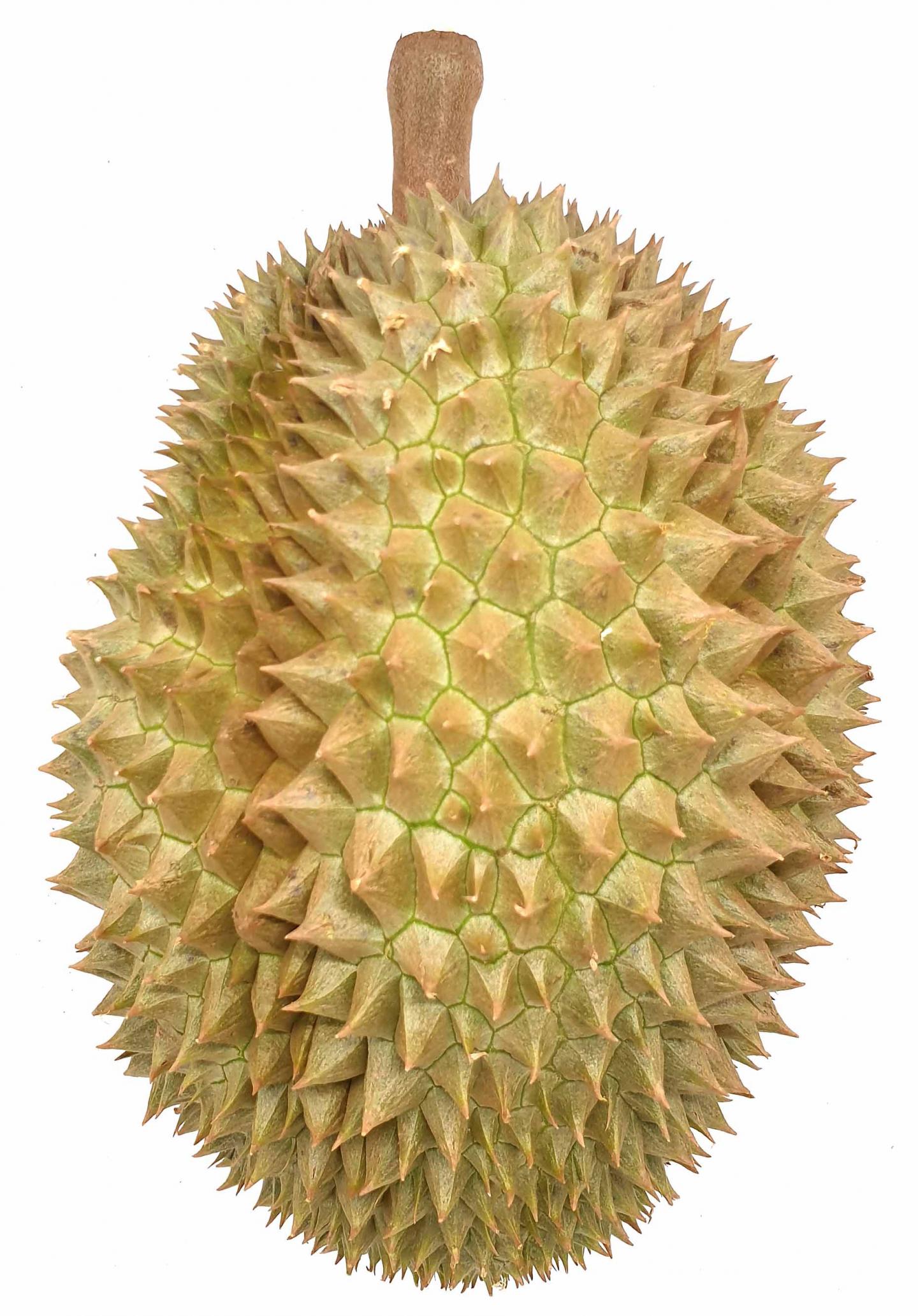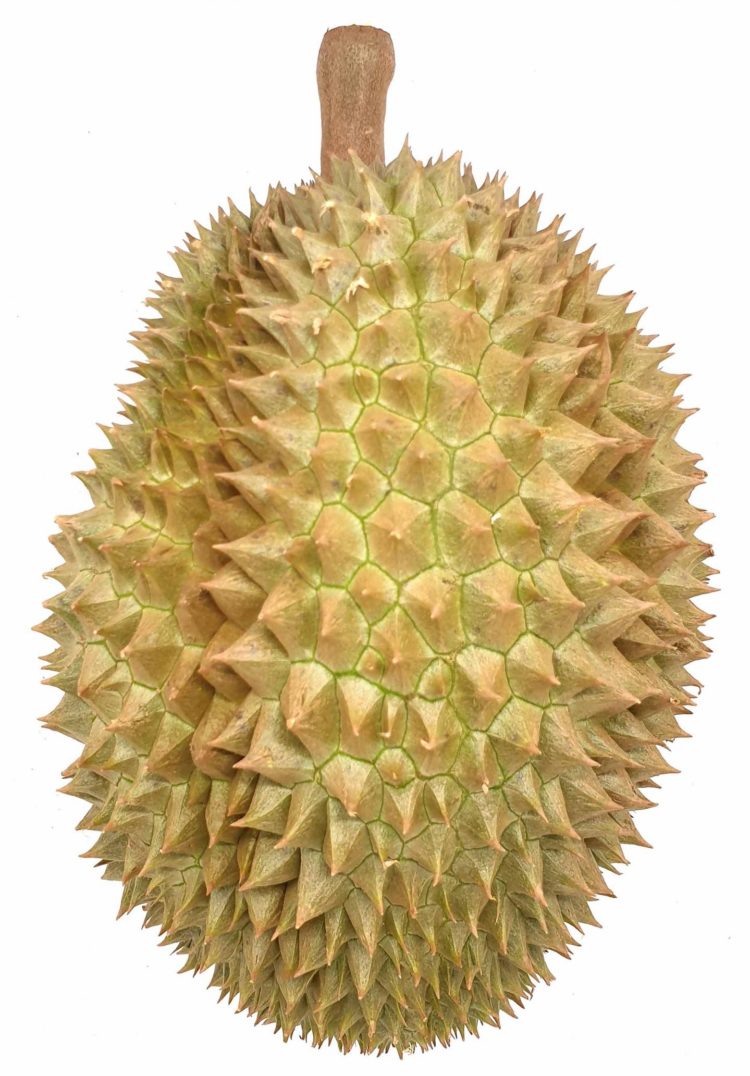First evidence of rare amino acid in plants

Credit: Martin Steinhaus
Freising/Germany – Researchers at the Leibniz-Institute for Food Systems Biology at the Technical University of Munich (Leibniz-LSB@TUM) have confirmed the presence of the rare amino acid ethionine in a plant – or more precisely, in the fruit of the durian tree. Despite its pungent odor, durian is very popular in Southeast Asia. As the team of scientists has shown, the amino acid plays a key role in the formation of the characteristic durian odor.
The pulp of a ripe durian emits an unusually potent and very persistent smell that is reminiscent of rotten onions. That is why the fruit has been banned on local public transportation in Singapore and at numerous hotels in Thailand. Nevertheless, different varieties of durian are highly valued in many Asian countries. Durian pulp has a high nutritional value, a distinctly sweet taste, and a pleasantly creamy consistency.
Enzyme releases odorant from amino acid
Previous research conducted at the Leibniz-LSB@TUM had already shown that the fruit’s stench is essentially due to the odorant ethanethiol and its derivatives. However, the biochemical pathway by which the plant produces ethanethiol remained unclear. As Nadine S. Fischer and Martin Steinhaus of the Leibniz-LSB@TUM have now demonstrated for the first time in their new study, ethionine is the precursor of the foul-smelling substance.
“Our findings suggest that as the fruit ripens, a plant-specific enzyme releases the odorant from ethionine,” says lead author Nadine Fischer. “This is consistent with our observation that during fruit ripening not only the ethionine concentration in the pulp increases, but also at the same time that of the ethanethiol. The latter explains why a ripe durian emits an extremely strong smell.”
Relevant not only from an olfactory aspect
“Knowing exactly how much ethionine the durian fruit contains is interesting not only because of its significance for the odor,” says principle investigator Martin Steinhaus. The food chemist adds that animal tests and cell culture studies have verified that the amino acid is not harmless. Rats that incorporated high doses of the amino acid together with their food developed liver damage and cancer of the liver. A newer study, however, suggests that low concentrations of ethionine may even have positive immunomodulatory effects.
“This raises the question of whether eating the fruit entails health risks,” says Steinhaus. “Further studies certainly need to be conducted.” The expert reassures us, however, by noting that “in order to consume a comparable dose of ethionine that had toxic effects in animal tests, a person weighing 70 kilograms would in one day have to eat 580 kilograms of fruit pulp of the Krathum variety which is especially rich in ethionine.”
###
Publications:
Fischer NS, Steinhaus M (2019) J Agric Food Chem (just accepted), DOI: 10.1021/acs.jafc.9b07065. Identification of an Important Odorant Precursor in Durian: First Evidence of Ethionine in Plants https:/
Li J-X, Schieberle P, Steinhaus M (2017) J Agric Food Chem 65: 639-647, DOI: 10.1021/acs.jafc.6b05299. Insights into the key compounds of durian (Durio zibethinus L. ‘Monthong’) pulp odor by odorant quantitation and aroma simulation experiments https:/
Scientific Contact:
PD Dr. Martin Steinhaus
Head of Section I and the Work Group
Sensory Systems Chemistry
Leibniz-Institute for Food Systems Biology
at the Technical University of Munich
Lise-Meitner-Str. 34
85354 Freising, Germany
Tel.: +49 8161 71-2991
Email: [email protected]
Press Contact:
Dr. Gisela Olias
Knowledge Transfer, Press & Public Relations
Leibniz-Institute for Food Systems Biology
at the Technical University of Munich
Lise-Meitner-Str. 34
85354 Freising, Germany
Tel.: +49 8161 71 2980
E-Mail: [email protected]
http://www.
Media Contact
Dr. Gisela Olias
[email protected]
49-816-171-2980
Original Source
https:/
Related Journal Article
http://dx.





